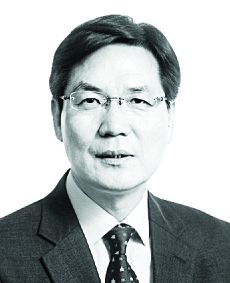A military option is difficult

The author is an editorial writer of the JoongAng Ilbo.
If North Korea sends a bad “Christmas gift” to the United States around the holidays, will Washington respond with a military option? Gen. Charles Brown, commander of the U.S. Pacific Air Forces, warned Pyongyang on Dec. 17 not to cross the red line — conducting an intercontinental ballistic missile (ICBM) or nuclear test. Brown hinted at the possibility of a military option by saying, “Go back to 2017, there’s a lot of stuff we did in 2017 that we can dust off pretty quickly and be ready to use.” But the message sounded more like he was begging the regime not to cross the red line. Washington is barely preparing a military option.
At this point, there’s a very low chance that Pyongyang will send a good Christmas gift to Washington because U.S. President Donald Trump is unwilling to grant North Korean leader Kim Jong-un the ease of economic sanctions he so desperately needs. When China and Russia circulated a draft resolution on Dec. 16 calling for the United Nations Security Council to lift some sanctions on the North, the U.S. State Department immediately expressed opposition to the idea. Knowing this, Pyongyang is not responding to calls from Washington for denuclearization talks. When Stephen Biegun, the U.S. special representative for North Korea, reached out to Pyongyang for face-to-face discussions during his recent visit to Seoul, he was completely ignored.
A possible bad Christmas gift from the North is a short-range ballistic missile test or a graver provocation. Throughout 13 occasions this year, the North tested a short-range ballistic missile or a “super-large” multiple-rocket launcher, but neither caught the attention of Trump because they are not a direct threat to the United States. So there’s a greater chance that in its next test, the North will either put a satellite on a rocket and launch it to outer space using a missile engine it recently tested in Tongchang-ri, or fire a modified ICBM.
A bolder provocation than testing a satellite launch would be an ICBM launch, which has four different levels of severity. The first, weakest level would be firing an ICBM it previously tested, perhaps the Hwasong-15, which can travel about 13,000 kilometers (8,078 miles). This time, the North may aim it to land between Japan and Hawaii, and through the experiment, verify the projectile’s atmosphere re-entry ability. When the North last tested the Hwasong-15 ICBM in November 2017, it fell in the East Sea, and the warhead burned as it re-entered the atmosphere due to high pressure and heat.
The second level would be firing a multiple-warhead ICBM by using the engine it recently tested and placing multiple warheads on a rocket, firing it toward the Pacific. Kwon Yong-soo, a former professor at Korea National Defense University, said he believes the Hwasong-15’s engine thrust is too weak to carry three to four small-sized nuclear warheads.
The third level would be to fire the three-stage rocket-type Hwasong-13 ICBM that the North is known to be developing and of which a blueprint was slightly revealed through its state media in August 2017. Kim Yeol-soo, head of the national security strategy division in the Korea Research Institute of Military Affairs, said that if Pyongyang pulls off a three-stage ICBM, it can target the entire U.S. mainland with a multiple-warhead nuclear weapon.
The fourth level would be a very dangerous provocation for the North to conduct: firing a nuclear warhead-tipped ICBM toward the Pacific and actually detonating it. In that case, the United States will not passively watch.
The question is, when or if the North crosses the red line, will the United States strike back? Washington will not find it easy to use a military option against a nuclear-armed country. That’s why if North Korean leader Kim actually steps over the red line, there’s a high chance Trump will not respond with an immediate military option just as the United States did not in 2017.
In contrast, the North is in a rush. Kim is set to convene a Workers’ Party plenary meeting at the end of this month, and it’s rare to hold a plenary meeting twice a year. Kim might define what “new path” the regime will take during the convention. According to Kim, the national security analyst, the North Korean leader may completely turn the table by changing his policies from dialogue with the United States to confrontation with the United States; from denuclearization to nuclear armament; from economic development through sanctions relief to development through “self-revival”; and reinforcing cooperation with China and Russia rather than seeking benefit from the United States.
Pyongyang is expected to escalate tensions with its announcement of a new path early next year, and it remains to be seen whether the United States will resort to a military option or pressure the regime while acquiescing its nuclear weapons. Either way, it is disadvantageous for Seoul. The Moon administration must stop being obsessed with improving ties with the North. Instead, it should strengthen the South-U.S. alliance and the South-U.S.-Japan national security cooperation and devise a more proactive national security policy. The nuclear umbrella is crucial. Also, the government needs to consider the idea of our own nuclear armament.










with the Korea JoongAng Daily
To write comments, please log in to one of the accounts.
Standards Board Policy (0/250자)